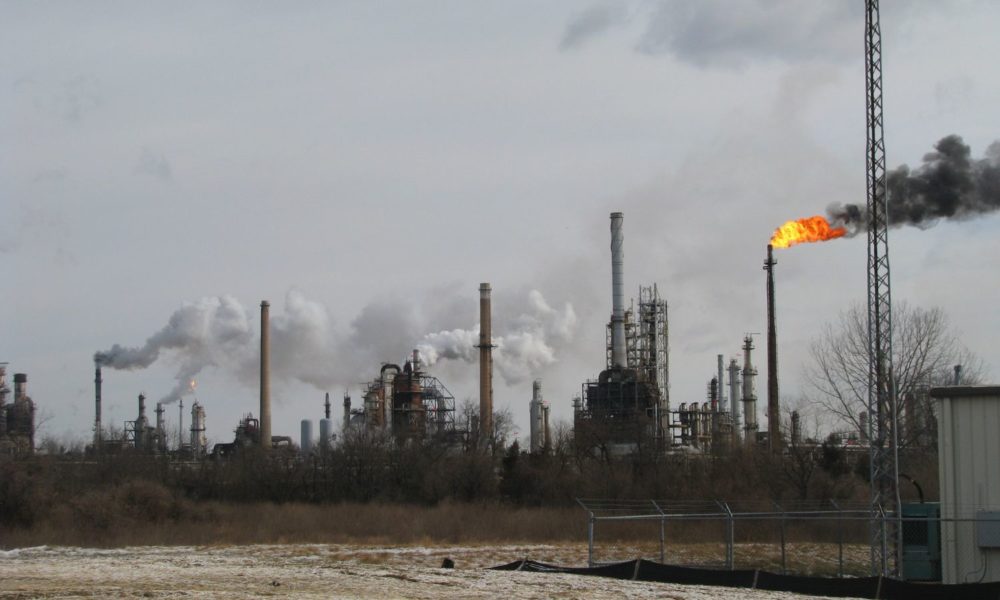The Sunday after Thanksgiving is usually quiet, but for those who live along Route 9 in New Castle, Delaware, it’s hard to forget the harrowing events that unfolded in November 2018. A local chemical manufacturer had an ethylene oxide leak, with nearly 3,000 pounds of the chemical released into the community. The risk of explosion ultimately shut down the Delaware Memorial Bridge to traffic, and residents were told to shelter in place as the flammable chemical leaked from the plant. In the aftermath, OSHA fined the facility, but also pointed out that the accident was preventable.
This event was hardly unique. In 2011, a raccoon found its way into some electrical equipment at the Delaware City Refinery, taking a number of units offline. More than 1,000 pounds of carbon monoxide, 500 pounds of sulfur dioxide, and 100 pounds of hydrogen sulfide were released during this event. A review of the Delaware Department of Natural Resources and Environmental Control enforcement orders shows that these types of events are far too frequent. Just this year, chemical disasters have disrupted and endangered the lives of residents of Winston-Salem, North Carolina, and Plaquemines, Louisiana.
While some level of risk is inherently present in chemical facilities, the accidents that plague surrounding communities are, ultimately, preventable. As a nurse, I know how our healthcare system has been pushed to the limits in recent years. For years, and especially since the COVID-19 pandemic, many healthcare facilities are under-resourced and unprepared to handle the disruption a chemical disaster in their communities would create. It is the Environmental Protection Agency’s (EPA) responsibility to regulate chemical facilities appropriately.
Outdated protections put communities at risk
The EPA rule governing how these facilities containing dangerous chemicals manage risks is called the risk management plan (RMP); the RMP currently regulates some 12,000 high-risk chemical facilities across the United States. But despite the program being in place for decades, the threat of chemical disasters is still a real and present danger for many communities and workers across the country. The current RMP rule needs urgent and long-overdue reform to prevent chemical disasters and protect human health and the environment.
Facilities operating under this rule contain chemicals that are known to be dangerous to human health. Nearly 200 million Americans live near these facilities, and millions more work and attend school nearby. RMP facilities often exist in or border Black, Indigenous, Latinx, and low-income communities, which already face enormous challenges due to marginalization and oppression: multiple pollution sources, poor housing conditions, over-policing, and lack of access to green spaces, healthcare services, and healthy, fresh, affordable foods. We know that exposure to dangerous chemicals can worsen respiratory and other health conditions, however more recently researchers have noted the psychological impacts of living near facilities. These impacts include increased general stress and uncertainty, social stress, fear related to water and air contamination, fatigue, and concerns about physical health.
RMP facilities are frequently clustered together and located near other industrial and commercial facilities, so nearby neighborhoods, schools, playgrounds, offices, medical facilities, and communities are polluted with multiple hazards at once. Nearly 4,000 RMP facilities throughout the United States are in areas that are seeing increasing impacts from climate change, such as coastal flooding, inland flooding, wildfires, and storm surge. This study, and a recent report from the Government Accountability Office—the non-partisan congressional watchdog agency—found that roughly a third of RMP facilities are at increased risk from climate impacts.
What the EPA must do
It is vital that the EPA address the cumulative health impacts from multiple polluting facilities and environmental stressors in an updated and strengthened RMP rule. In addition, the RMP should require frequent and independent facility inspections while expanding the number of facilities covered under the program.
Broad disclosure of easily accessible information in languages spoken by affected communities should be required to ensure that communities are alerted in a timely fashion to hazards, and in ways they understand. Because the RMP directly affects the emergency preparedness of a community in the event of a chemical emergency, current RMP rules are not adequate for the health and safety of frontline communities and first responders. Workers, nearby community members, and first responders have experienced substantial health burdens. Some have even died due to RMP accidents, which is why worker involvement in RMP plan development is essential to identify hazards and prevent incidents. In case of emergencies, facilities should minimally be equipped with back-up power, leak detection, and real-time air monitoring to minimize the adverse outcomes of disasters.
Healthcare professionals: let’s use our voices
On June 14th of this year, fellow nurses and health advocates spoke to the federal Office of Management and Budget (OMB) about our experiences living next to hazardous sites and the subsequent impact it has on the physical and mental health of us and our communities. My colleagues were from West Virginia and Kansas, but our stories were the same and they spoke to the need for a better RMP rule.
To craft a better RMP rule, the EPA must listen to the underserved communities impacted most by RMP facilities, as well as the healthcare professionals who serve those communities, while heeding the research showing how climate change impacts change risk management. The EPA is currently working on updating the RMP rule, slated to be released for public comment in September 2022 with a final rule issued by August 2023. The time is now for public health experts and members of the impacted communities to speak up.
As healthcare providers, we spend our professional careers working to promote patient and community health, but we need EPA to do their part and fulfill their mission “to protect human health and the environment.” That’s why I joined with hundreds of other healthcare professionals in calling on EPA to issue a strong RMP rule. We know that chemical leaks, explosions, and spills are a real threat. It’s not a matter of if disaster strikes, but when.

